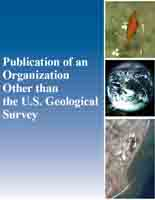Regional analysis of the dependence of peak-flow quantiles on climate with application to adjustment to climate trends
Links
- More information: Publisher Index Page (via DOI)
- Open Access Version: Publisher Index Page
- Download citation as: RIS | Dublin Core
Abstract
Standard flood-frequency analysis methods rely on an assumption of stationarity, but because of growing understanding of climatic persistence and concern regarding the effects of climate change, the need for methods to detect and model nonstationary flood frequency has become widely recognized. In this study, a regional statistical method for estimating the effects of climate variations on annual maximum (peak) flows that allows for the effect to vary by quantile is presented and applied. The method uses a panel–quantile regression framework based on a location-scale model with two fixed effects per basin. The model was fitted to 330 selected gauged basins in the midwestern United States, filtered to remove basins affected by reservoir regulation and urbanization. Precipitation and discharge simulated using a water-balance model at daily and annual time scales were tested as climate variables. Annual maximum daily discharge was found to be the best predictor of peak flows, and the quantile regression coefficients were found to depend monotonically on annual exceedance probability. Application of the models to gauged basins is demonstrated by estimating the peak-flow distributions at the end of the study period (2018) and, using the panel model, to the study basins as-if-ungauged by using leave-one-out cross validation, estimating the fixed effects using static basin characteristics, and parameterizing the water-balance model discharge using median parameters. The errors of the quantiles predicted as-if-ungauged approximately doubled compared to the errors of the fitted panel model.
| Publication type | Article |
|---|---|
| Publication Subtype | Journal Article |
| Title | Regional analysis of the dependence of peak-flow quantiles on climate with application to adjustment to climate trends |
| Series title | Hydrology |
| DOI | 10.3390/hydrology12050119 |
| Volume | 12 |
| Issue | 5 |
| Publication Date | May 14, 2025 |
| Year Published | 2025 |
| Language | English |
| Publisher | MDPI |
| Contributing office(s) | Central Midwest Water Science Center |
| Description | 119, 43 p. |


